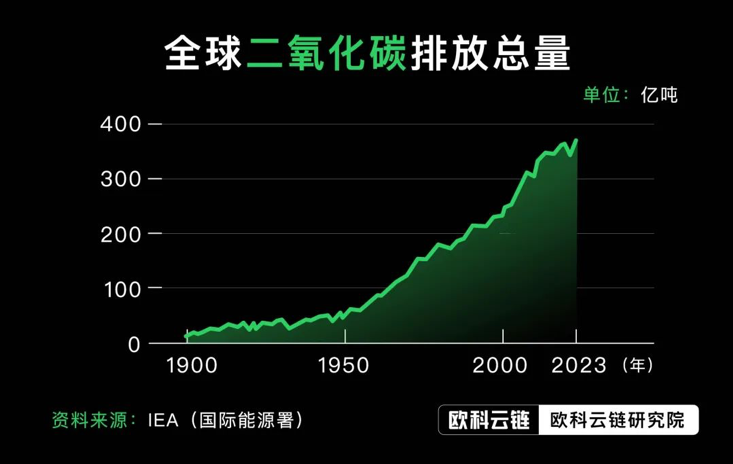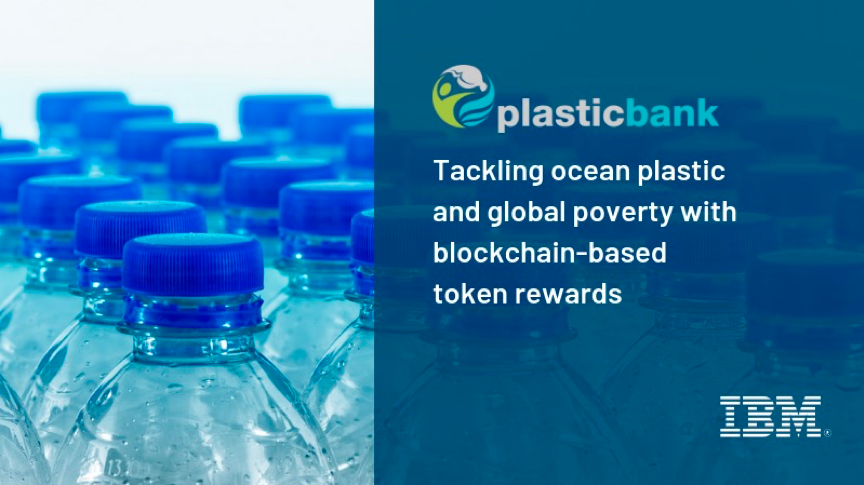Original source: Okey Cloud Chain Research Institute
Original source: Okey Cloud Chain Research Institute
Original Author: Justin W.
Arbor Day also reminds us of the urgency of environmental protection. Global carbon dioxide emissions continue to increase. The International Energy Agency (IEA) pointed out that carbon dioxide emissions will increase by 0.9% in 2022, exceeding 36.8 billion tons, a record high. The task of human beings to control greenhouse gas emissions is urgent and will remain arduous in the future.

Why is Web3 green and environmentally friendly?
text
Blockchain technology is the core premise for the realization of Web3. The blockchain was born because of Bitcoin, and the initial power to promote the development of the blockchain in an environmentally friendly direction also came from Bitcoin. As we all know, the Bitcoin mining process is a process that uses a lot of energy for computational processing. With concerns about the climate crisis rising and industries coming under increasing pressure, the energy use of the Bitcoin network is easily quantified, making it an attractive target for scrutiny.
The debate about the use of Bitcoin energy has been raging. As early as 2021, Musk publicly expressed his concerns about Bitcoin mining on Twitter and suspended the use of Bitcoin to pay for Tesla's car purchases.
 This point of view has caused an uproar in the Web3 industry, and there are also some opposing opinions. Microsoft founder Bill Gates believes that Musk's criticism of Bitcoin's energy consumption is "unnecessary" and said that people should focus on the wider use and application of encrypted assets instead of using Bitcoin as a standard. Carl Icahn, a well-known American investor and entrepreneur, also believes that Bitcoin’s energy consumption is an important problem, but it is not the main reason for its failure, but a technical challenge that needs to be solved.
This point of view has caused an uproar in the Web3 industry, and there are also some opposing opinions. Microsoft founder Bill Gates believes that Musk's criticism of Bitcoin's energy consumption is "unnecessary" and said that people should focus on the wider use and application of encrypted assets instead of using Bitcoin as a standard. Carl Icahn, a well-known American investor and entrepreneur, also believes that Bitcoin’s energy consumption is an important problem, but it is not the main reason for its failure, but a technical challenge that needs to be solved.
In recent years, people have also been studying how to reduce the impact of Bitcoin mining on the environment, such as using renewable energy instead of traditional fossil energy for mining, or using idle and wasted energy for mining. Bitcoin can be used anywhere The characteristics of local mining, the use of energy that is "destined to be wasted".
In order to allow blockchain technology to be used continuously on a large scale, more and more people are turning to develop more environmentally friendly blockchain technology, which directly promotes the development of green Web3. Therefore, based on the following three points of analysis, the development of green Web3 will become more and more important:
(1) The urgency of environmental protection: "Save energy and protect ecology" is the consensus of all mankind.
(3) Enabling environmental protection: People's demand for eco-friendly blockchain solutions may increase. This will drive innovation and lead to more sustainable solutions.
"Green on-chain" and "Green on-chain"
text
The development of green Web3 includes but is not limited to two directions: "greening on the chain" and "greening on the chain".
Among them, "greening on the chain" introduces resources and information in the field of environmental protection and circular economy into the blockchain, and realizes the quantification, traceability and management of carbon emissions and energy consumption through smart contracts and other mechanisms. For example: establishing a carbon emission trading market, achieving carbon neutrality goals, etc.
Instead, it will use a proof-of-stake approach, whereby each node’s stake in validating transactions and creating blocks is determined based on the amount of cryptoassets each node holds. This will reduce the energy consumption of the Ethereum network by more than 99%, reduce the carbon emissions of Ethereum, and improve the efficiency of the entire network.

image description
Image source: Internet
"Green on-chain" is to convert digital assets related to environmental protection and carbon neutrality into programmable digital assets through blockchain technology, so as to realize digitization, tradability and programmability. For example: converting energy data generated by renewable energy into programmable digital assets. Through these two methods, Web3 environmental protection not only achieves the goals of environmental protection and carbon neutrality, but also digitizes, tradable and programmable relevant resources and information, and promotes the deep integration of digital economy and environmental protection.
Another example is IBM's "Plastic Bank" project, which is more famous. Founded in 2013, IBM's Plastic Bank uses a blockchain-based reward system to recycle plastic and issue digital tokens through the system to replace the use of cash. These tokens can then be exchanged for necessities in stores using the non-profit app: food, water or mobile phone top-ups, all promoting the protection of the environment.

Image source: Internet
The two-way rush of green environmental protection and technological development
textWeb3 plays an increasingly important role in the field of environmental protection. It not only actively explores the path of green and low-carbon development in terms of technology and application, but also becomes an important direction for the future development of Web3. As the Web3 industry continues to develop, its role in promoting green environmental protection will become more important. The Ouke Cloud Chain Research Institute released it on the WeChat public account of "Ouke Blockchain" some time ago"We made 10 predictions about the future of blockchain"
The report shows that after experiencing a brutal growth period, the industry began to pay attention to the problems brought about by rapid development. In this context, renewable finance (ReFi) came into being.
ReFi becomes the new narrative of Web3
Renewable Finance (ReFi) uses the transparent mechanism of blockchain technology to introduce natural assets into the chain and introduce incentive mechanisms to reward those who contribute to green development, thereby promoting sustainable development.
 The main features of ReFi are traceability and provability, which are the advantages of blockchain technology. By using blockchain technology, ReFi can trace all aspects of environmental governance, so as to realize all-round supervision of environmental governance. At the same time, ReFi can also provide a variety of digital assets, such as green bonds and carbon emission rights, so that environmental protection and green finance can be better combined.
The main features of ReFi are traceability and provability, which are the advantages of blockchain technology. By using blockchain technology, ReFi can trace all aspects of environmental governance, so as to realize all-round supervision of environmental governance. At the same time, ReFi can also provide a variety of digital assets, such as green bonds and carbon emission rights, so that environmental protection and green finance can be better combined.
Today, the ReFi track has several applications. Regen Network focuses on helping businesses purchase, trade and recycle carbon credits on-chain. Musk also founded the X Prize Fund and is currently entering ReFi. Not only that, but many L1 and L2 blockchains such as Cosmos, Polygon, and Near have clearly stated that they will promote and support a low-carbon green economy. Meanwhile, Icago, the blockchain application of the Industrial and Commercial Bank of China, is also rewarding users for using energy-efficient vehicles. In terms of blockchain green environmental protection, the main functions of ReFi include the following aspects:
1. Help environmental governance organizations establish a more transparent and efficient management system to improve governance efficiency and management level;
2. Use blockchain technology to implement comprehensive supervision of data and information generated in the process of environmental governance to ensure the credibility of governance results;
3. Issue digital assets, such as green bonds and carbon emission rights, to help environmental protection companies finance and promote the development of green finance;
4. Provide blockchain technology solutions so that all aspects of environmental governance and green finance can be supervised and managed.
As the Okey Cloud Chain Research Institute said in the previous article: "The development of the blockchain has passed the era of 'staking the land'. In the future, more applications will enter the renewable finance (ReFi), and they will attract companies and users to join in. , and use tokens to calculate their contributions and provide economic returns, or introduce sustainable and green concepts into their own projects or businesses.”